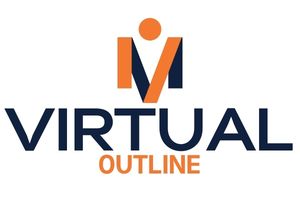Future-Proof Your IT Infrastructure: Key Insights for Acquiring Server 2025
As businesses advance into a more digital and data-driven era, the need for robust and adaptable IT infrastructure becomes increasingly critical. Acquiring the right server for 2025 is pivotal in ensuring that your IT environment remains efficient, scalable, and resilient. Future-proofing your server investment involves strategic planning and careful evaluation of several key factors. This guide offers essential insights to help you make a well-informed decision for server 2025 kaufen.
1. Understand Emerging Business Needs
Anticipating future business requirements is crucial for selecting a server that will stand the test of time:
- Performance Demands: Evaluate the expected increase in workloads, data processing needs, and user activity. Server 2025 should have the processing power, memory, and storage capacity to accommodate these demands, ensuring it can handle evolving business applications and high data volumes.
- Scalability Requirements: Choose a server that allows for future expansion. Consider modular and upgradeable designs that enable easy addition of resources such as additional processors, memory, and storage. This flexibility will support your organization’s growth and technological advancements without requiring frequent replacements.
- Application Evolution: Identify upcoming trends and potential changes in your application landscape. Ensure the server can support new software and technologies that may become integral to your operations, including advanced analytics, AI, and cloud integration.
2. Evaluate Technology Advancements
Staying current with technological advancements can enhance your server’s performance and efficiency:
- Processor Technology: Opt for servers equipped with the latest processor technologies that offer better performance, energy efficiency, and capabilities for handling complex tasks. Look for processors that support virtualization and multi-threading to maximize computing power.
- Memory and Storage Innovations: Consider servers with cutting-edge memory and storage solutions. Technologies such as NVMe (Non-Volatile Memory Express) and DDR5 memory offer faster data access and processing speeds, contributing to overall system performance and responsiveness.
- Networking Features: Ensure the server includes advanced networking capabilities, such as high-speed Ethernet and support for the latest network protocols. This will improve data transfer rates and connectivity, accommodating growing network traffic and enhancing overall efficiency.
3. Focus on Reliability and Redundancy
Reliability and redundancy are essential for maintaining uninterrupted operations:
- Redundancy Features: Select servers with built-in redundancy to prevent downtime. Features like dual power supplies, cooling systems, and RAID (Redundant Array of Independent Disks) configurations help ensure continuous operation and data integrity in case of component failures.
- Durability and Build Quality: Assess the server’s build quality and durability. A well-constructed server is less likely to experience hardware failures and will provide a longer operational lifespan, reducing the need for frequent replacements.
4. Consider Integration and Compatibility
Integration with existing systems and future technologies is key to a smooth transition and long-term viability:
- Compatibility with Existing Infrastructure: Ensure the server is compatible with your current IT environment, including software, network devices, and storage systems. Seamless integration reduces setup time and minimizes disruptions.
- Support for Emerging Technologies: Look for servers that offer support for emerging technologies and standards. This includes compatibility with cloud services, containerization, and orchestration platforms, enabling your infrastructure to adapt to new technological trends.
5. Analyze Total Cost of Ownership
A comprehensive understanding of the total cost of ownership (TCO) will help you make a cost-effective decision:
- Initial Investment: Compare the initial costs of different server models, factoring in performance and features. Evaluate how each option aligns with your budget and performance requirements.
- Operational and Maintenance Costs: Consider ongoing expenses such as energy consumption, cooling, and maintenance. Choose a server with energy-efficient features to reduce operational costs and environmental impact.
- Upgrade and Support Costs: Factor in the costs of future upgrades and support services. Select a server that offers straightforward upgrade paths and reliable vendor support to manage long-term maintenance and improvements effectively.
6. Prioritize Security and Compliance
Ensuring that your server meets security and compliance standards is critical for protecting sensitive data:
- Built-in Security Features: Opt for servers with advanced security features, including hardware-based encryption, secure boot, and intrusion detection. These measures protect against potential threats and data breaches.
- Regulatory Compliance: Verify that the server complies with relevant industry regulations and standards. This is essential for businesses handling regulated or sensitive data, ensuring adherence to legal and regulatory requirements.
By carefully considering these insights—emerging business needs, technology advancements, reliability, integration, total cost of ownership, and security—you can future-proof your IT infrastructure with Server 2025. This strategic approach will enhance your organization’s resilience, scalability, and efficiency, supporting long-term success in a rapidly evolving technological landscape.







